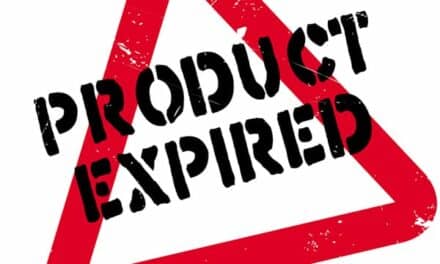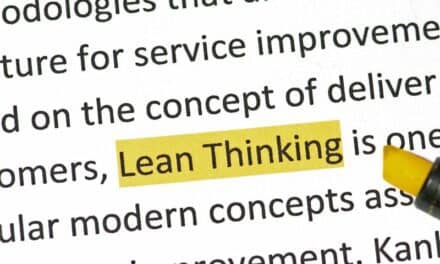By Binseng Wang, ScD, CCE
By now most, if not all, CE/HTM professionals should know that FDA stated in its report to the Congress earlier this year that there is not sufficient currently-available objective evidence “to conclude whether or not there is a widespread public health concern related to servicing, including by third-party servicers, of medical devices that would justify imposing additional/different, burdensome regulatory requirements at this time.” However, its study showed “…the objective evidence indicates that many OEMs and third-party entities provide high quality, safe, and effective servicing of medical devices.” Therefore, FDA decided it does not believe “…that additional, formal regulatory action is warranted…”
While CE/HTM professionals are celebrating this victory, some OEMs already stated that they are unhappy with the FDA’s decision and are preparing to ask Congress to take more aggressive action, according to MITA. This is not surprising as this war has been going on since 1987, and there is no end in sight.
As Katelyn R. Bittleman, a consumer safety officer at the FDA’s Center for Devices and Radiological Health, explained in her presentation at the recent AAMI annual conference, the first statement above is based on FDA’s conclusion that existing Medical Device Report (MDR) data are often “incomplete, inaccurate, untimely, unverified, or biased.” However, FDA does not “…believe that extending MDR reporting or registration to third-party servicing entities would be highly effective.” Instead, FDA is encouraging the community “to foster the development of evidence to assess quality, safety, and effectiveness of device servicing through systematic collection of servicing errors.”
I believe the CE/HTM community should strongly support this data collection initiative because it will help clear the air once for all about the alleged widespread servicing errors. For this initiative to succeed, two critical issues need to be resolved from the beginning to allow eventual clean and fast data analyses. One is the lack of widely accepted terms for device service. For example, the term “preventive maintenance” is not universally accepted because some believe—correctly—that many of those activities are often not designed or able to prevent failures at all. FDA also realized this challenge and decided not to define them for regulatory purposes but to deploy some “working definitions” during its 2016 Workshop.
The second critical issue is the lack of standardized terms for indicating the root cause of the failure(s) that eventually lead to patient harm. While information recorded in service reports on failures reported and parts replaced can allow an experienced CE/HTM professional to later conclude what was the root cause, ECRI Institute’s analysis of the MAUDE database showed that this is an extremely laborious and yet sometimes inconclusive task.
While I don’t think I can easily convince everyone to accept my preferred terms for service, I think I can propose a small, simple set of failure cause codes (FCCs) to address the second issue. This is because together with my former colleagues, I have conducted extensive studies called “evidence-based maintenance” (EBM) using FCCs with good results, twice in 2010, and once in 2011 and 2013, respectively.
Table 1 shows the FCCs that were adopted. First, failures originated from within the equipment itself are segregated from those traced back to accessories, consumables or networks, so appropriate follow-up actions can be taken. Second, FCCs are divided into those deriving from corrective maintenance (CM) versus those from scheduled maintenance (SM), so it will be easier to catch mistakes committed by CE/HTM professionals in assigning these codes. The only exception is “no problem found” (NPF), as it can be assigned to SM when no failures of any type were found, as well as to CM when the failure reported by the user was not duplicated. If desired, the latter can be replaced by “cannot duplicate” (CND). SM includes safety and performance inspections (SPIs) and true preventive maintenance—i.e., replacement of wearable parts and material—as well as verification of calibration performed by CE/HTM professionals but not routine maintenance—e.g., cleaning, checking self-test results and calibration verification using gases or chemicals—performed by the users.
Incidentally, readers should be cautioned that CND does not necessarily mean that the root cause is necessarily a use error—or, more accurately, a human-factor engineering issue—as some failures are intermittent and, thus, difficult to reproduce. By tracking NPFs found in repairs (i.e., CND), the CE/HTM professional can have a better handle on those challenging intermittent problems.
Table 1 – Proposed Failure Cause Codes (FCCs) with respective acronyms and definitions.
| Source | Activity | FCC | Failure Cause Code (FCC) definition |
| Equipment | Corrective maintenance (CM) | UPF | Unpreventable failure, evident to user. |
| PPF | Preventable and/or predictable failure, evident to user. | ||
| USE | Failure induced by use, i.e., abuse, abnormal wear and tear, accident, or environment issues, but does not include use errors as the alleged failures cannot be reproduced later during testing. | ||
| SIF | Service-induced failure caused by servicer error or premature parts failure. | ||
| Scheduled maintenance (SM) | PF | Potential failure, i.e., failure is either about to occur or in the process of occurring. | |
| EF | Evident failure, i.e., a failure that can be detected but was not reported by the user. | ||
| HF | Hidden failure, i.e., a problem that could not be detected by the user unless running a special test or using specialized test/measurement equipment. | ||
| CM and SM | NPF | No problem found, including alleged failures that could not be duplicated (CND). | |
| Accessories or Consumables | CM or SM | ACC | Accessory failures, excluding batteries |
| BATT | Battery failed before the scheduled replacement time. | ||
| Network | CM or SM | NET | Failure in or caused by network, while the equipment itself is working without problems. |
To help the readers understand better the FCCs, some simple examples are provided below:
- UPF: unpreventable failures caused by random electronic component failures;
- PPF: preventable and/or predictable failures caused by chemical, mechanical or pneumatic components that have a known wear-out pattern, such as oxygen sensor and lubricants;
- USE: equipment accidentally dropped on the floor, fluctuations in power line, and electromagnetic interference;
- SIF: heat shield not installed on examination lights, SPI not performed after a major repair, and high ‘‘infant mortality’’ syndrome of certain new sterilizer valves;
- PF: a fraying power cord or a partially severed O-ring that has not yet caused equipment to stop working;
- EF: the pulse oximetry function of a multiparameter patient monitor failed but clinicians have decided to use a standalone pulse-ox unit instead of asking for the repair of the entire monitor;
- HF: excessive leakage current on an AC-powered device detectable only using a safety analyzer or undetected out-of-calibration patient monitors;
- NPF: a piece of equipment that passed SPI without failure of any type (PF, EF or HF) found during SM or a failure reported by a user could not be duplicated during CM.
- ACC: finger probe failure reported as a failure of the pulse oximeter or defective ultrasound probe reported as a failure of the ultrasound machine;
- BATT: a rechargeable battery was found to fail from holding the charge before its scheduled replacement time. It could be the result of a CM if reported by the user or found by a servicer during SM.
- NET: ECG communication failure caused by unstable or inadequate network coverage in certain areas.
Obviously, of particular interest to the FDA—and the servicing community in general—is the number of SIFs found relative to the total number of devices and services performed for each category of equipment or, whenever possible, a particular brand and model of a device. Results of our studies of tens of thousands of pieces of equipment in hundreds of device types show that SIFs are very rare, typically well under 1% of the FCCs found. This is not surprising as it is consistent with all the data recently provided to and analyzed by FDA. On the other hand, it does not mean SIFs do not exist and should not be monitored carefully. Unfortunately, very few servicers—regardless of affiliation—are willing to report their own mistakes. Even more unfortunate is the unwillingness of many CE/HTM professionals to report SIFs committed by others despite calls to act responsibly for the benefit of the general public.
In addition to tracking SIFs, a few additional steps need to be taken. First, since SIFs can be caused by improper servicer actions or by parts that have high “infant mortality” rate, one needs to distinguish them. If the SIF is caused by parts, the problem should be reported to the supplier (manufacturer or second-source) and, if patient harm did occur, to the FDA either as a mandatory or a voluntary MedWatch report. Unfortunately, there are documented cases of high “infant mortality” even among “genuine” parts. If the SIF is caused by improper servicer actions, one must determine if this is the result of one or a combination of the following issues: (1) improper procedure either from the OEM or the servicer’s alternate equipment management (AEM) strategy, (2) inadequate training, or (3) servicer error. It also would be useful to determine the servicer’s affiliation (OEM, third party or healthcare establishment) to help FDA better understand the distribution of SIFs. According to Professor James Reason, human errors should be classified into “slip, lapse, mistake or non-compliance,” so that appropriate corrective and preventive actions can be taken (Reason J. Human error. Cambridge University Press, New York NY, 1990).
While laborious, SIF analysis is seldom necessary because as prior experience indicated, it is quite rare, particularly those involved in actual patient incidents. On the other hand, only by digging up the root cause(s) of SIF one can reduce them for the benefit of the patients.
As I have said before in this magazine, (see Evidence-based Maintenance is CE’s Moonshot; 2016, April), adopting FCC is not easy. CE/HTM staff have to be properly trained and supervised in their assignment of FCCs. This is because instead of simply recording the problem found and the parts, if any, replaced, they now have to make a decision on what is the root cause of the failure. Also, sometimes a piece of equipment has more than one cause of failure. The solution for the latter case is to ask them to assign the most serious FCC, so each service record has only one FCC. Our experience indicated that while the training and supervision were initially challenging and time-consuming, most CE/HTM professionals eventually embraced enthusiastically the use of FCC once they realized that the results can help them improve the effectiveness of their work and reduce similar failures in the future.
Since the publication of the articles mentioned above, several CE/HTM teams have adopted them, including one based in Florence, Italy in 2017, led by Gonnelli, et al., with good results. However, I do not believe the 11 FCCs described above are perfect. I welcome constructive criticisms that would allow the development of a widely accepted set of FCCs that can help the FDA and the servicer community to better understand the extent and root causes of servicing errors and, ultimately, improve service safety and effectiveness.
Binseng Wang, ScD, CCE, fAIMBE, fACCE, is director, quality and regulatory affairs, with Greenwood Marketing LLC (formerly WRP32 Management, Inc.). The views expressed in this article are solely those of the author. For more information, contact interim chief editor Chuck Holt at [email protected].
References
1. Food and Drug Administration, FDA Report on the Quality, Safety, and Effectiveness of Servicing of Medical Device, May 2018. Available at https://www.fda.gov/RegulatoryInformation/LawsEnforcedbyFDA/SignificantAmendmentstotheFDCAct/FDARA/ucm598050.htm. Accessed June 24, 2018.
2. Medical Imaging & Technology Alliance. FDA Report on Medical Device Servicing Rightly Recognizes Need for Adoption of Quality Management Principles, National Electrical Manufacturers Association. Available at https://www.medicalimaging.org/2018/05/15/fda-report-on-medical-device-servicing-rightly-recognizes-need-for-adoption-of-quality-management-principles/. Accessed June 24, 2018.
3. Bittleman, KR. FDA Report on the Quality, Safety, and Effectiveness of Servicing of Medical Device. Presentation made at the 2018 AAMI Conference, Long Beach CA.
4. Sauer R. Working Definitions and Issue Summary. Presentation made at the 2016 FDA Workshop on Quality, Safety, and Effectiveness of Servicing of Medical Device, Silver Spring MD. Available at http://wayback.archive-it.org/7993/20171114130552/https://www.fda.gov/downloads/MedicalDevices/NewsEvents/WorkshopsConferences/UCM529024.pdf. Accessed June 24, 2018.
5. ECRI Institute. ECRI Institute’s Comments on FDA’s March 4, 2016 Request for Comments on Refurbishing, Reconditioning, Rebuilding, Remarketing, Remanufacturing and Servicing of Medical Devices Performed by Third-Party Entities and Original Equipment Manufacturers. Available at https://www.regulations.gov/contentStreamer?documentId=FDA-2016-N-0436-0126&attachmentNumber=1&contentType=pdf. Accessed June 24, 2018.
6. Wang B, Fedele J, Pridgen B, et al. Evidence-Based Maintenance: Part I – Measuring maintenance effectiveness with failure codes, J Clin Eng, 2010, 35:132-144
7. Wang B, Fedele J, Pridgen B, et al. Evidence-Based Maintenance: Part II – Comparing maintenance strategies using failure codes, J Clin Eng, 2010, 35:223-230.
8. Wang B, Fedele J, Pridgen B, et al. Evidence-Based Maintenance: Part III, Enhancing patient safety using failure code analysis, J Clin Eng, 2011, 36:72-84.
9. Wang B, Rui T, Koslosky J. Evidence-Based Maintenance: Part IV – Comparison of scheduled inspection procedure, J. Clin. Eng, 38:108-116, 2013
10. Wang B, If You See Something, Say Something, 24×7 Magazine, 21:12-14, Dec 2016
11. Zak J. The changing world of maintenance, Proceedings of 2005 AAMI Annual Conference and Exposition, May 2005. Association for the Advancement of Medical Instrumentation, Arlington, VA.
12. Fedele J & Wang B. How to Comply with the Revised Equipment Management standards issued by CMS and TJC? MD Expo Fall 2014, Orlando FL. Also available at https://www.regulations.gov/contentStreamer?documentId=FDA-2016-N-0436-0111&attachmentNumber=1&contentType=pdf. Accessed June 24, 2018.
13. Wang B. Evidence-based maintenance is CE’s moonshot. 24×7 Magazine, 21(4):20-24, April 2016
14. Gonnelli V, Satta F, Frosini F & Iadanza E. Evidence-based approach to medical equipment maintenance monitoring. In: Eskola H., Väisänen O., Viik J., Hyttinen J. (eds) EMBEC & NBC 2017. EMBEC 2017, NBC 2017. IFMBE Proceedings, vol 65. Springer, Singapore. Available at https://link.springer.com/chapter/10.1007%2F978-981-10-5122-7_65. Accessed June 24, 2018.







There is a risk here of lumping things together that are in fact different, and thereby hiding what we really need to know. For example in SIF there is a very substantial and important difference between a “servicer error” (the technician did it) and “premature parts failure” (over which the technician had no control). Moreover alleged servicer errors was the heart of the most recent debate over whether or not there is a significant service problem. This cannot be answered if these two are lumped together.
I agree, I think universal coding is essential to move to the next level.
Here is another possible set of codes HTM could adopt.
These are WO Action Codes:
I have different set of resolution codes I use as well.
QA codes I believe are important as well.
1.RD – Repaired device, Broken Equipment reported, repair/correction initiated/completed.
2.TD/WO – triaged device, WO opened.
3.TP/RIP/N – Triaged problem, Repair in progress, appropriate party notified.
4.NPF – Malfunction Reported, Equipment checked and No Problem Found.
5.CND – Malfunction reported, could not duplicate reported problem. Cause undetermined.
6.UE – Malfunction reported, User Error caused failure. In-service provided correction initiated.
7.UD – Malfunction reported, Damage by user caused failure, correction initiated.
8.NLD – Service required due to Negligent Loss or Damage by User caused failure, correction initiated.
9.PV – Performance verification requested, device found to be functioning correctly.
10.NHE – Non Hospital Owned Equipment check requested and performed. Device OK.
11.AIT – Acceptance Inspection Test – New Device Inventoried and Inspected – OK.
12.DEMO – Demo equipment inspected, tested and inventoried, svc manual received.
13.IA – Inventory Adjustment – Location change or Retirement, data management.
following this are QA check boxes that could/should go on the work order
QA Check Boxes:
[ ]NYT – No Yellow Tag attached to device/Item, hand off failure.
[ ]SMDA -Suspect Patient Injury or Death may be associated with event.
[ ]MISS – Concerned this was a Near Miss that nearly led to an SMDA event.
[ ]PHI – suspect PHI may have been compromised because of the event
[ ]CYBERSECURITY – Concern Cybersecurity may have been compromised because of the event.
[ ]ERROR – Concern an error made contributed to the event.
[ ]INSERVICE – Concerned event resulted from insufficient in-service or training
either way, IMHO a major hurdle to overcome is there are so many CMMS vendors each with their own ideas about how things should look on the screen seeming to take a back seat to actual CE and QA functionality.
95% of all failures are physical damage or user error proving it so you can bill the customer is the tricky part. Here’s why catagorization fails: LP2 error on Baxter sigma pumps is a physical damage failure almost 100% of the time. Nurses ripping IV lines out of them causes the studs to break in the housing. Baxter doesn’t sell these as parts, so you ship it to the OEM who only list on their SR that they replaced the LP2 assembly. Most people never know that the stud on the back broke, just list it as a component failure. Just document what you saw, what did, and how you proved you fixed it. Wasting time coding this into Booleans so some mathlete at the home office can make some charts takes away from the time you could be using to figure out the real story.
Thanks, Scot and Bill, for your comments and suggestions.
My colleagues and I opted for as few FCCs as possible and in a single level (not separating into WO ad QA codes) because our past experience showed that too many codes only get the staff more confused and also would spread the data out too thinly for statistical analyses, especially for equipment in small quantities. For example, 10 injectors would take 3 years to have meaningful amount of data for statistical analysis.
Perhaps I did not explain well the SIFs. As stated in the article, they compose <1% of all FCCs found. In order to discern premature parts failure from improper servicer actions, it is necessary to have a dozen or more equipment failures traced to specific parts for classifying it properly. So it is difficult, if not impossible, for the staff to make this decision when closing the work order as they don’t have history at hand. Better leave this analysis and conclusion for the manager when he/she investigates all the SIFs collected after some time to determine the right root cause. Similar challenge exists for CND, as some of them could be due to intermittent failures and not “use errors” (actually most would be better called human-factor engineering – HFE issues).
We performed such deeper analyses for all the patient incidents and close calls allegedly involving equipment failures for a period of ten years. It was laborious but we had only 518 cases during the decade and concluded only 6 of them are SIFs that were cause by improper servicer actions (See Fedele & Wang, How to Comply with Revised CMS & AO requirements, MD Expos 2014, also available at https://www.regulations.gov/contentStreamer?documentId=FDA-2016-N-0436-0111&attachmentNumber=1&contentType=pdf).
In essence, the proposed FCCs are not “be all, end all” but simply a first step to make sense of the vast amount of service records we all collect but can’t analyze because of the lack of a proper set of FCCs. Documenting parts replaced does not help us find more cost-effective ways to maintain equipment safe and reliable. For example, an extensive review of records revealed that the most often replaced parts were printed circuit boards (Collins JT. Work histories in a medical equipment management program—an analysis of parts replaced. Chicago, IL: American Society for Healthcare Engineering; 2008). This result not only could not help us find the best maintenance strategy, it did not answer FDA’s question whether 3rd-party service needs to be regulated.